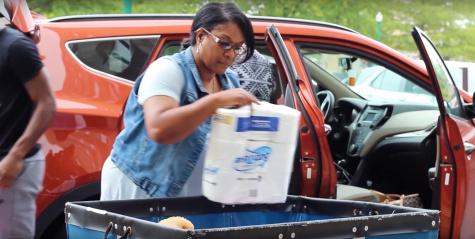Power plant in need of $13 million worth of repairs
Although Eastern’s power plant meets Illinois Environmental Protection
Agency standards, Gary Reed, director of facilities planning and management, said it would be better to design a new plant than to keep maintaining the current one.
The problem lies within the plant’s scrubbers, which allow the plant to
remove the pollutants from smoke or gas caused by high sulfur levels. However, Eastern’s scrubbers have been broken for three years, with an estimated $13 million cost of repair, according to Jeff Cooley, vice president for business affairs.
In the meantime, Eastern’s plant has to import more expensive low-sulfur coal from Indiana so the plant can continue to control its air emissions.
Jim Shonkwiler, director of the budget, said that this technology was basically experimental when it was installed, and it is now eating itself alive with the acidic environment it has created. He also said that the original company that manufactured parts for the scrubbers is no longer
in business, making it difficult to get the parts.
“Not only is the scrubber operation obsolete, but there are other parts of
the boiler plant that are over 80 years old,” Reed said. “To repair these old systems requires us to fabricate parts because replacements have not been available for decades.”
According to Reed, the current method of maintaining the plant is an unwise use of funds, so much so that it would better to build a new plant at an off-campus location.
“Plant relocation would also free up valuable space in the core of campus,”
Reed said. “In addition, we would propose to include electrical generation capability in the new plant design to take care of the campus electrical needs well into the future.”
One of the big projects talked about coming to Illinois has been the creation of a FutureGen plant, one that would burn coal but give off no emission since it would be stored underground.
While FutureGen is something Reed believes would work well in the long-term for Illinois coal markets, he does not see it applying to a small plant like Eastern’s. Yet, that does not mean Reed would not like to see a new plant.
The new plant Reed would like to see would be one of new design concepts, one that would increase campus utilities eliability, efficiency, and contain up-to-date missions controls that allow the plant to return to
low-cost, plentiful Illinois coal.
“These kinds of improvements cannot be back-fit onto the existing plant in its present location,” he said.
Reed said he considers his steam plant as “mission critical,” as when there is no steam, the campus cannot be provided with such necessities as heat in buildings, hot water or prepared food.
“For a number of budget cycles, we have requested state funding to address the serious deferred maintenance issues in the plant,” he said. “The EIU administration realizes this is a priority need and is doing what it can to secure the necessary funds to accomplish the plant replacement goal.”
“It is a ticking time bomb,” Shonkwiler said. “Something has to be done to
replace it.”








































